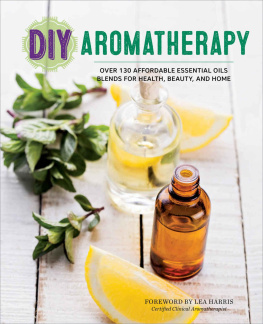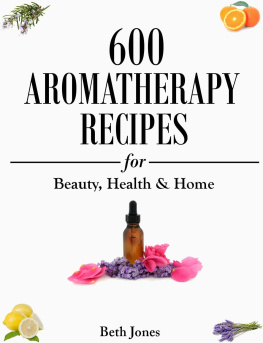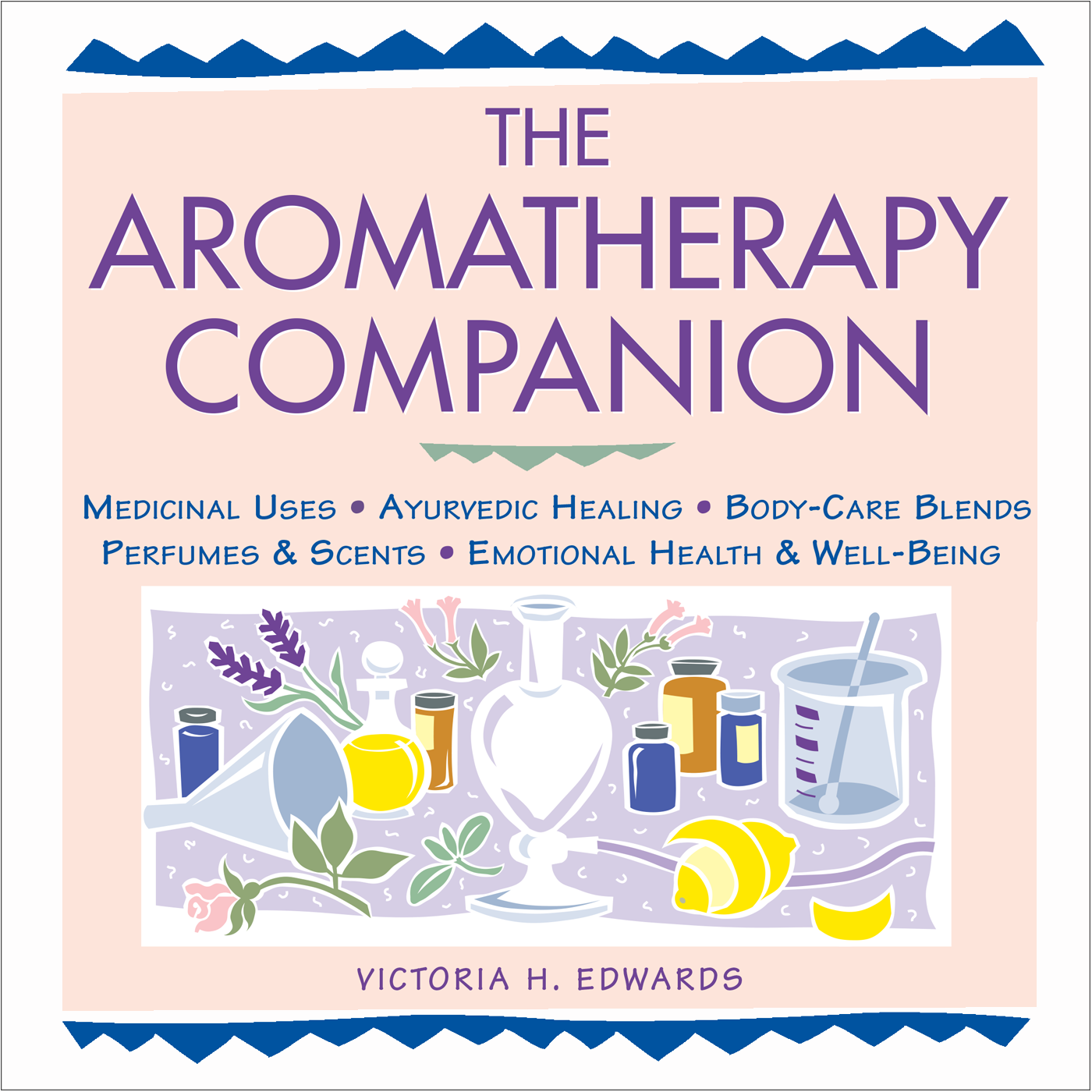Dedication
To my daughter, Cassandra Rose Edwards, my mother, Verna Ledet Hammer, and my faithful dog, Rosy.
Acknowledgments
My thanks go to many people: To Donovan L. Harmon, who was the first one to encourage me to write this book back in 1989; Marilyn Latyak for providing me a hideaway to get some writing done; Steve Bash, who reminded me to remember I am writing for my readers; Linda Kelleher, my faithful office manager; Terry Meier for the lionesss share of helping make my vague ideas more readable and knowing how to turn a sentence around and curtsy; Jeanne Rose, my mentor, who taught me a lot about botanical language and still continues to; Patrick Collins, who has made French aromatherapy come to life for me and generously taught at Aroma Camp in France; my editor Deborah Balmuth for her gentle strength and endurance; illustrators Laura Tedeschi and Alison Kolesar; and all the people at Storey Publishing who have worked on this book.
Table of Contents
Preface
My dear gentle reader, it is for you that I stay up late into the night typing away, my eyes burning, barely able to see the liquid crystal screen. My intention has been to awaken you with the same inspiration and knowledge that I have gained along the scented path. For 14 years I have labored over this work. Longer than almost any painting, perfume blend, or other work of art.
My story begins when I was a girl of three, staying with my grandmother in Thibodaux, Louisiana. In my memories of my grandma, Eugenia Picou Ledet, her kitchen is always full of tastes and smells. Ill never forget the sight of headless chickens running around the big backyard. Who could? The vegetable garden was a necessity: It provided fresh tomatoes and okra to Mamies seafood gumbos. If youve ever known any French people, then you know that fresh food and its scents are central to life itself.
The summer that I was four, I scratched my leg crawling under a barbed-wire fence and went crying to Mamie. She applied some homemade liniment. It smelled spicy and good; it burned at first, then soothed. I remember bright red hissing crabs trying to escape the boiling pot, and fresh pearly oysters in big burlap bags eaten raw on the half shell with horseradish. I recall the hot, sweet, bitter tastes of Louisiana. Coffee brewed with chicory and served in a demitasse cup with lots of sugar cubes. Toasted sugar, the best chocolate fudge, big fat pecan pralines on wax paper. At the family farm in the hot and humid bayou, I first tasted fresh raw sugarcane. My great-grandpa Ledet was a natural healer in the Cajun tradition.
I remember the smells from the bathroom cupboard, full of remedies like Dr. Tichenors Thyme Liniment for mosquito bites and Dr Hausmanns Mexico Liniment, composed of spices including cloves, star anise, turkey rhubarb root, and peppermint. I loved baths in the deep old tub with its elaborate brass fixtures and the soft scent of Ivory soap and the faintest hint of lemongrass.
Mamies bedroom dresser was full of bottles and little jars; sweet old Avon bottles, a blue deco Evening in Paris perfume bottle. I loved to smell the perfumes, the cedar chests, and the lavender sachets in the linen drawers. My journey upon the fragrant path had begun.
After my grandma died, her spirit came to visit me on her way to heaven. I was at the hospital, where I had just given birth to my daughter Cassandra. I awoke in the middle of the night and smelled her pale, powdery, vetiver scent. Mamie could still connect with me through fragrance, and she has been a spiritual guide for me ever since.
My botanical career also began around the age of four. I have fond memories of picking tiny wild purple pelargonium and storksbill, and concocting formulas in the old wooden garage out back.
My family moved to Germany just before my fifth birthday. My favorite pastime there was picking flowers on the hillsides. I picked honeysuckle to suck out its sweet juice, along with red clover blossoms, chamomile, sweet woodruff in German, der Waldemeister, master of the woods. I also enjoyed picking blueberries and collecting petrified wood.
Lilacs are so childlike and sweet when they are freshly picked. The smell of lilacs is my favorite, and a childhood memory of so many people I have met. Today I picked lilacs, and I marveled at their scent as they wilt like little old ladies.
I invite you to join me for a walk along the scented path and share my lifelong enchantment with natures gifts of ethereal scents and sublime colors. I am sure you will rediscover scent memories long ago forgotten. Just as a familiar song on the radio can evoke memories of times past, the scents of essential oils may stir up snapshot images of scenes and experiences from your earlier life. Please, walk with me along the pathways of your mind; come enjoy the fragrant journey.
Chapter 1
Introduction to Aromatherapy and Essential Oils
In very simple terms, aromatherapy is the therapeutic use of pure essential oils to improve the health and balance of the skin, the body, the mind, and the soul.
Squeeze a lavender head or a sage leaf and smell your fingers. That aroma is the result of volatile oils, released by the bursting of tiny glands in the plant material. These volatile oils represent the radiant energy of the sun, translated by the plant into a chemical form. If you look at the same plant through a microscope, you will see the little pouches where these chemicals, the volatile oils, are stored. Although we dont yet fully understand the role these essential oils play in the drama of plants life cycles, they have played a role throughout the development of human culture.
The quantity and quality of the essential oils that a plant produces depend on many things. Just as soil, elevation, and weather conditions; genus and species; horticulture, processing, and handling all influence the ultimate quality of a fine wine, so essential oils for therapeutic use vary according to the plants conditions of growth.
Buyer Beware
Imported essential oils are often cut or adulterated for the perfume industry, whose main concerns are price and aroma stability. Thus essential oil buying is not an easy task. A good importer of essential oils for aromatherapy must buy from many different sources and constantly test oils for purity.
What are Essential Oils?
Chemically, essential oils are a cocktail of molecules with names like esters, terpenes, alcohols, phenols, aldehydes, ketones, ethers, and sesquiterpenes, along with myriad other chemicals. These constituent parts have various properties. Some are anti-inflammatory, some antifungal, some antiviral, mucolytic, or bactericidal. All are antiseptic in varying degrees, and all are volatile. Essential oils fall naturally into three groups. The most highly volatile essential oils, known as top notes in the perfume industry, are those that evaporate most quickly. These oils tend to have an uplifting and invigorating action. Essential oils that have a lower volatility, and thus evaporate slowly, are known in the perfume industry as









